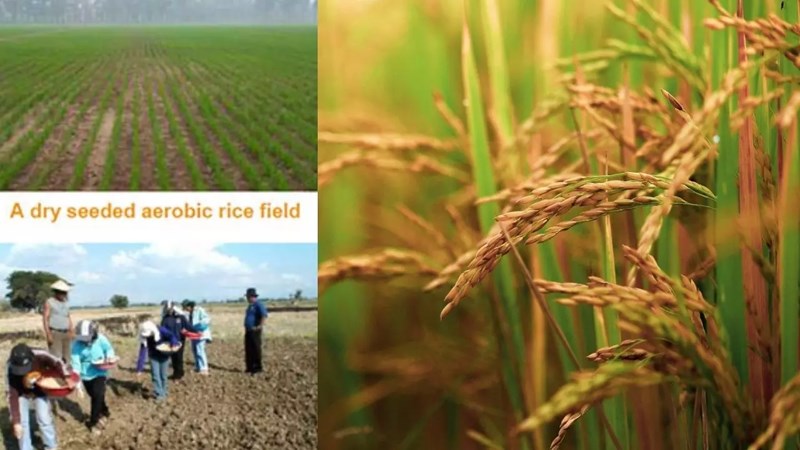Paddy cultivators adopt the aerobic method of farming as it is less water-intensive and cuts down cost
Cultivating paddy aerobically is low cost, sustainable, cuts down labour, and uses much less water, as this method requires very little irrigation and no transplantation.


Aerobic method requires neither the expensive field irrigation nor transplantation. Photo: By arrangement
Paddy cultivation traditionally requires a lot of water. However, methods have evolved over the years that use less water, yet yield more produce.
The aerobic method is one of them that is becoming increasingly popular with paddy cultivators across the country, because it requires neither the expensive field irrigation nor transplantation.
Also Read: New cumin variety to take lesser time to yield, pest-resistant; input costs to reduce as well
“The conventional technique is water-intensive because considerable water is consumed in the nursery first. Then, once the saplings are transplanted, they have to be watered once again,” Vinod Kumar Srivastava, scientist at the Institute of Agricultural Sciences, Banaras Hindu University, told Gaon Connection. The aerobic method of sowing can be adopted even where there are few irrigation resources, he added.

Also Read: Give me red: Indigenous red rice is fast making a comeback in the fields of Himachal Pradesh
Explaining the aerobic method, Srivastava said, “This method does not require any field preparation or tilling. It can save forty to fifty per cent of the water when compared to other systems, and saves the farmer considerable expenses,” he pointed out.
Also Read: Do you love Basmati rice? Scientists develop three new varieties with double the yield

Dos and don’ts
Srivastava had the following advice for farmers wanting to adopt the aerobic method. He said:
- Drought-tolerant varieties of paddy should be sown.
- While cultivating paddy, it is essential to observe the pattern of rainfall. If there has been no rain for 15 days, the field must be irrigated just as it is done for a wheat crop.
- Once wheat is harvested in the summers, the field must be ploughed well before paddy is sown. Ploughing will ensure the weeds, fungus, pests etc., which may be in the soil will be removed. Also, the turning of the soil will ensure it stays moist and retains rainwater.
- Small bunds should be created, so that there is no runoff of the rainwater.
- Use herbicides only if the soil is moist.
- Plant urad or moong crop beside the paddy; this prevents weeds from growing.
- Choose early maturing varieties of paddy that is being cultivated at a high altitude; select medium type for farms in low-lying places where rainwater collects.
- Paddy should be sown using a seed drill or zero tillage machine; if these are unavailable, broadcasting the seeds also works.
- Planting paddy in a single row makes weeding easier.
According to Srivastava, if the paddy is sown in the month of May the farmer will require 12 kgs of seed per acre. If the sowing happens in June or July, the farmer will need less than 10 kgs of seeds. “If you plant too many seeds, the plants may turn out weak,” he cautioned.
Read the story in Hindi.

